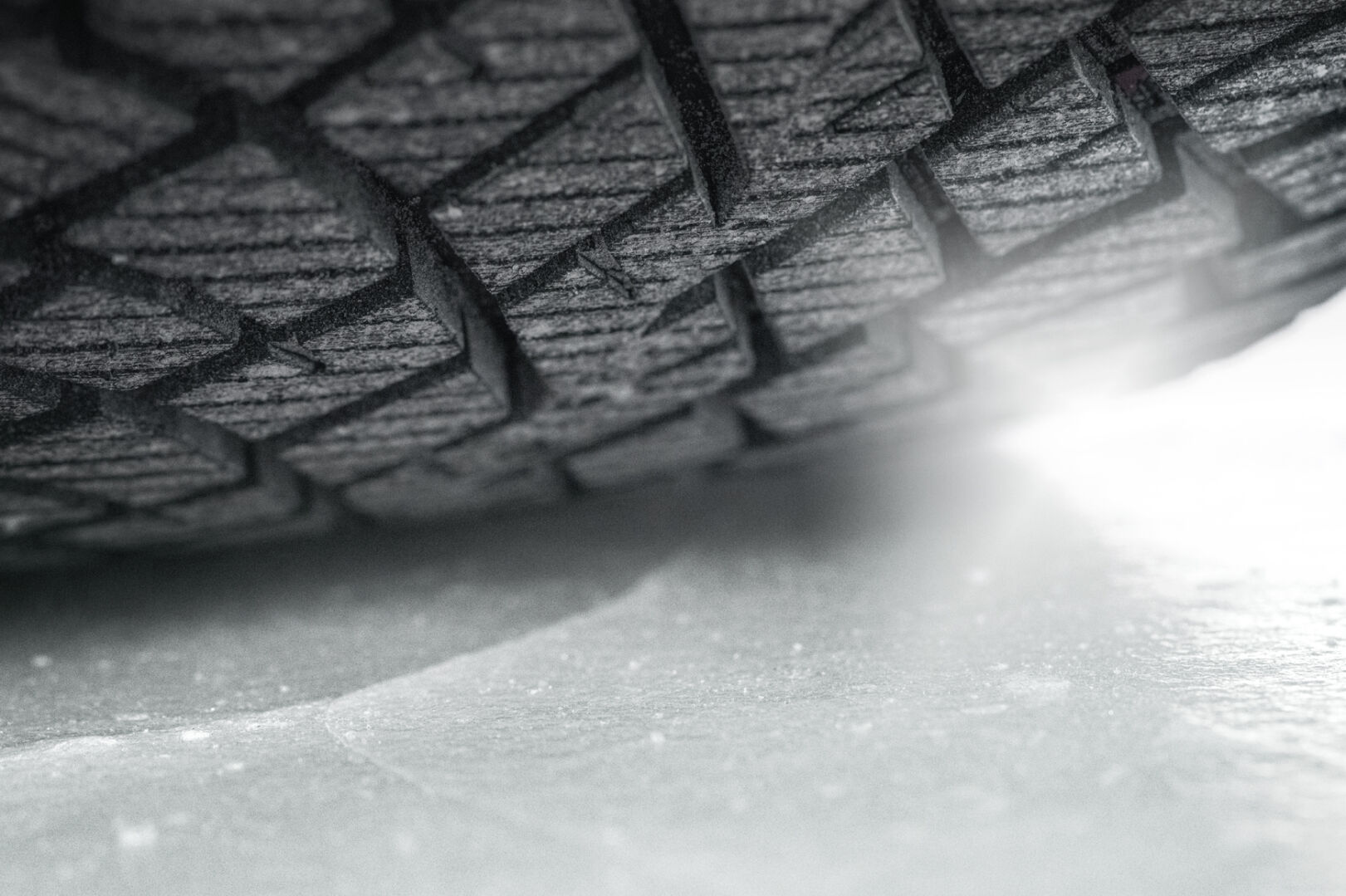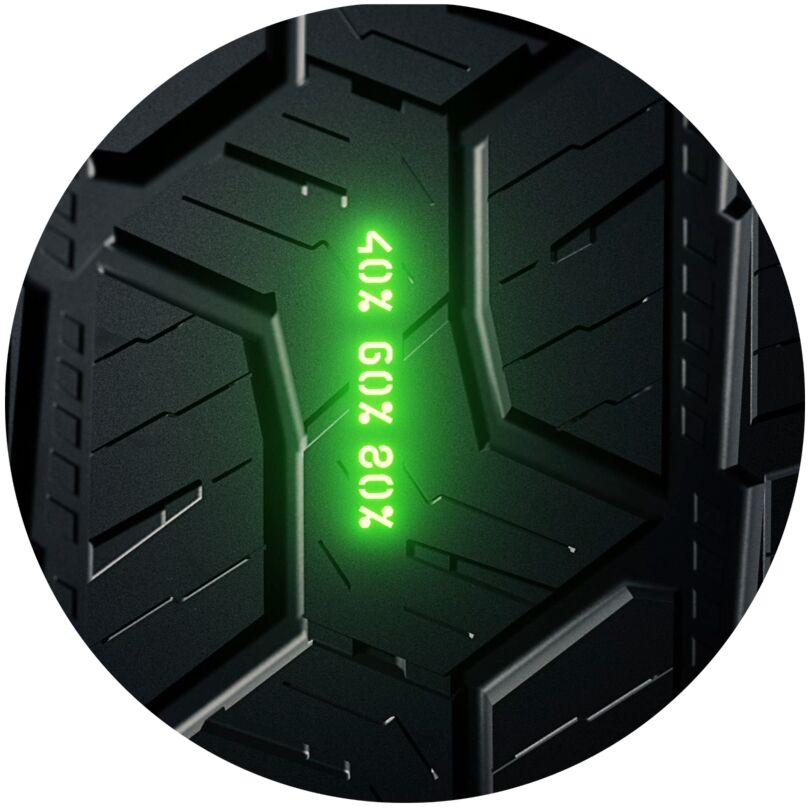
Tire wear can be determined by checking the tread depth. Take care of the condition of your winter tires and check their tread depth before winter.
High quality, well-maintained tires are one of the most significant factors affecting the safety of winter driving. Whether your car has studded or non-studded tires, check their condition to prepare for driving during winter and ensure that your winter tires have not worn out ahead of winter's arrival. By ensuring safe winter tire tread depth, you can avoid breaking tire regulations and dangerous situations in traffic.
What is tire tread depth?
Tire tread depth is measured from its main grooves. These are the wide grooves in the middle of the tread whose depth decreases as the tires wear. There are requirements for tire wear and minimum tread depth. Drivers are not allowed to deepen the grooves of their car's tires to extend the tire’s lifespan. Drivers can test tread depth themselves with a penny, for example. Their tires may also come with a wear indicator. The patented Nokian Tyres Driving Safety Indicator (DSI) is a wear indicator that tells drivers what percent of tread depth is left on the tire (80%, 60%, or 40% tread remaining). When the numbers on the DSI wear off, you know the tire is too worn and should be replaced. Nokian Tyres winter tires also have a snowflake symbol associated with the wear indicator called the Winter Safety Indicator. Once the snowflake wears away, that indicates to drivers the tire is no longer safe in demanding winter conditions

What is sufficient winter tire tread depth?
The minimum tread depth allowed by law and the tread depth that is safe for road safety are not the same thing. Although it may technically still be legal to drive tires with a lower tread depth, they may be too worn to offer sufficient grip in demanding winter conditions. The U.S. Department of Transportation (DOT) recommends replacing tires when they reach 2/32 of an inch (~1.6 mm), and many states legally require tires to be replaced at this depth. Tire laws vary by state, province, and country - so be sure to check the laws in your local area to ensure compliance.
Drivers expecting to encounter snowy and icy road conditions in the winter should check their winter tires' tread depth ahead of the winter season with enough time to order new winter tires if necessary. It is not recommended to drive on winter tires if their tread depth is less than 5/32" - 6/32" (~4 - 5 mm). Though many U.S. states deem 2/32" (~1.6 mm) as the minimum legal tread depth for all season tires, a significant decline in performance on wet, and especially snowy or icy surfaces occurs far before reaching this minimum tread depth. The safety-enhancing features of both all season and winter tires begin to deteriorate as tires wear out. Your vehicle may also fail to pass regular inspection if the tires are too worn.
Most new winter tires start with a tread depth of around 10/32" - 11/32" (~8-9mm), and the same can be said for most new all season tires. Sufficiently deep tread grooves ensure safe slush and hydroplaning properties. The usage period for winter tires is typically from the beginning of November to the end of March, and depending on when weather or road conditions require their use.
The importance of sufficient tread depth is particularly emphasized in winter tires, which must be able to provide sufficient grip on ice, slush, and snow. Even if the tires have studs or grip-enhancing sipes, these alone are not enough in difficult winter conditions and on slippery roads.
Measure tire tread depth with a penny
The exact tread depth of a winter tire cannot be measured just by looking at it. However, checking tread depth can be done at home without any special tools. A penny coin is all you need. Insert the penny with Lincoln’s head upside down into a groove. If part of the head is covered, your tires are above the minimum tread depth identified by the U.S. DOT. (But, remember, being at or just above minimum does not mean your tires are performing safely in harsh winter weather and road conditions.) If you can see Lincoln's entire head, your tread is worn to 2⁄32" or less and it's absolutely time for new tires.
If you are not confident performing the tread depth check yourself or would like an exact measurement, seek assistance from a professional. Tire and car service centers can measure tire tread with a tread depth gauge, giving an accurate result. You can call your local Nokian Tyres dealer to see if they offer these services.

Tire age of winter tires matters
In brand new winter tires, the tread depth is more than 10/32" (8 mm). However, tread depth alone does not tell the whole truth, and the driver must also take into account the tire’s age. As the tire ages, the grip properties of the tread compound deteriorate. The tire lifespan is typically 6 years in use or 10 years from date of manufacture, whichever comes first. The total age can be measured from the tire’s manufacture date, which can be checked from the markings pressed on the tire's sidewall. The first two numbers of this marking indicate the week of manufacture of the tire, and the latter numbers its year of manufacture. Even if less than 10 years have passed since the tire was manufactured, its lifespan should ideally be a maximum of six years. However, it is not always easy to assess the condition of your tires based solely on age, and the tire's grip and driving characteristics can deteriorate significantly even before the six year mark. A good way to extend the lifespan of winter tires is to change their position each time the tires are changed from all season tires to winter tires. Normally, the vehicle's driving tires wear about twice as fast as the freely rotating tires, so timely tire rotation under the car significantly improves the overall mileage of the tires.
Winter driving checklist
- There are minimum requirements for tire tread depth, and they can differ based on what state or province you live in. For all season tires, the general minimum requirement is 2/32" (1.6 mm). For winter tires, it's recommended that tread depth be no less than 5/32" - 6/32" (~4 - 5 mm). Always check local laws and regulations where you live.
- Even if the tread depth of tires is sufficient in the eyes of the law, the safety-enhancing features of both all season and winter tires begin to deteriorate as tires wear out.
- Tread depth can be checked at home, for example with a penny. The tires may also have a wear indicator that gives information about tire tread depth.
- In addition to the tread depth of your tires, their manufacturing year and lifespan also affect their condition and safety.
- Check the tire markings. Winter-approved tires three-peak mountain snowflake emblem.
Do your tires need to be replaced? Local Nokian Tyres dealers can answer questions and help find the right tire to suit your driving needs:
Please remember that it is the driver’s responsibility to ensure their tires are safe and suitable for their vehicle and to follow the vehicle’s manufacturer´s guidelines for proper use and maintenance. Consult your closest Nokian Tyres dealer or your vehicle’s manufacturer for specific advice.


